Feature engineering
Modeling with tidymodels in R

David Svancer
Data Scientist
Feature engineering with the recipes package
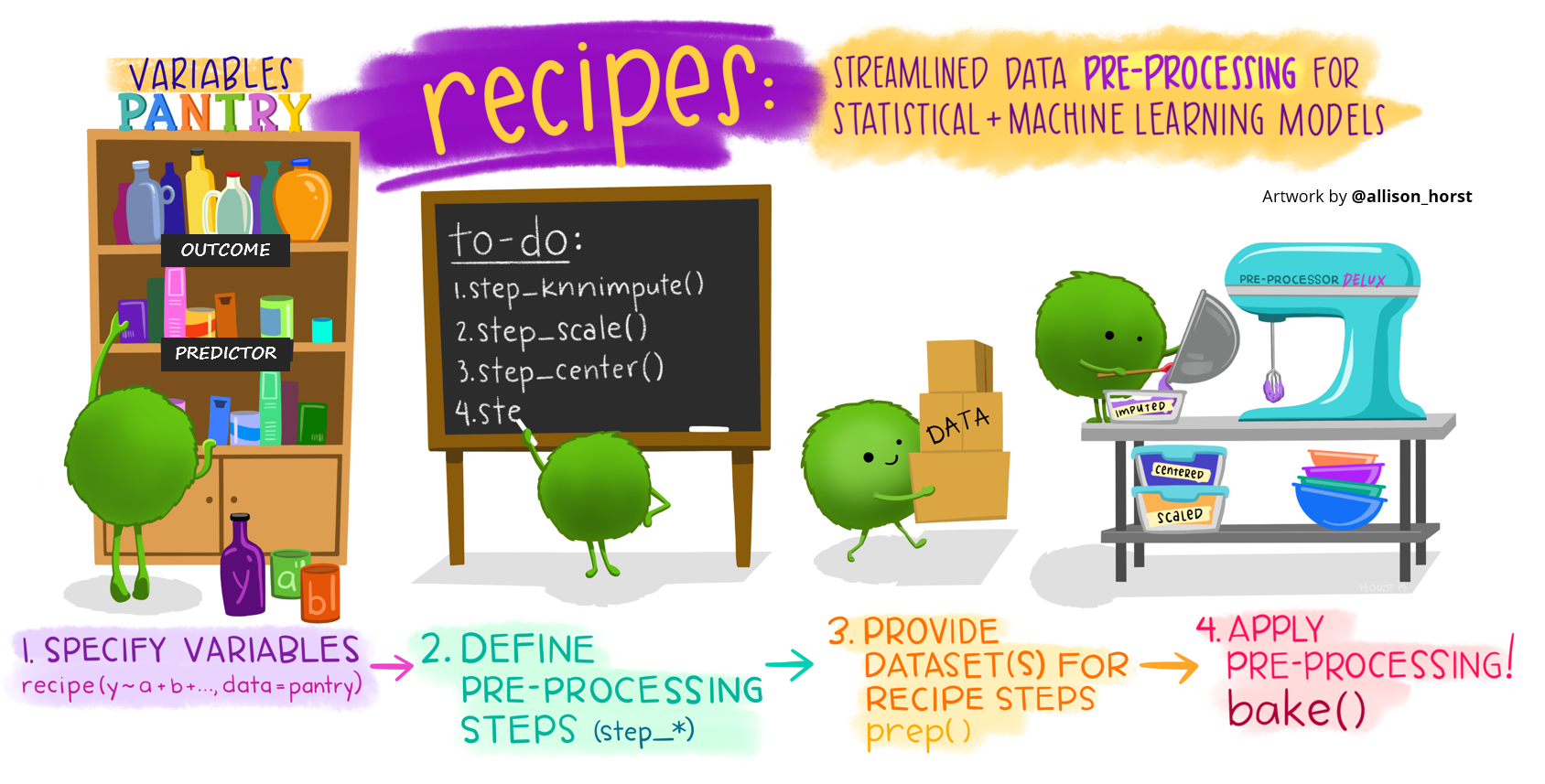
Specifying variable types and roles
Define column roles
- Assign outcome or predictor role to all variables
Determine variable data types
- Numeric data
- Categorical data
Accomplished with the recipe() function
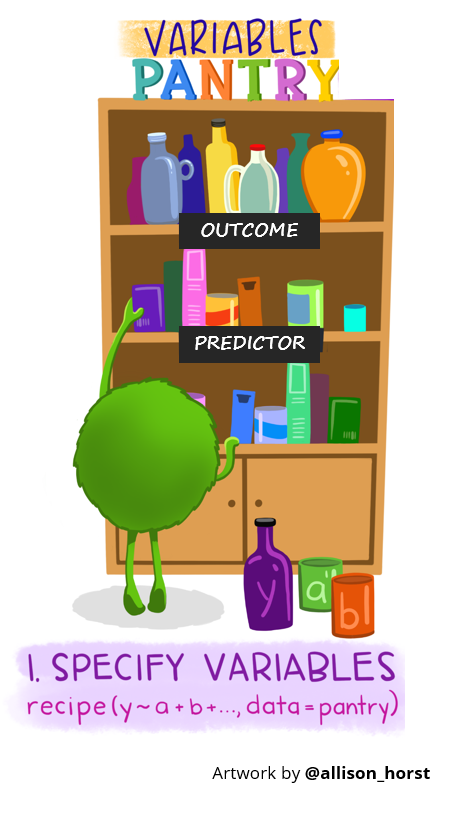
Data preprocessing steps
Add required data preprocessing steps
- Imputation of missing data
- Data transformations
- Centering and scaling numeric variables
- Creating new variables
- Calculating ratios of variables
- And many more...
Each step is added with a unique step_*() function
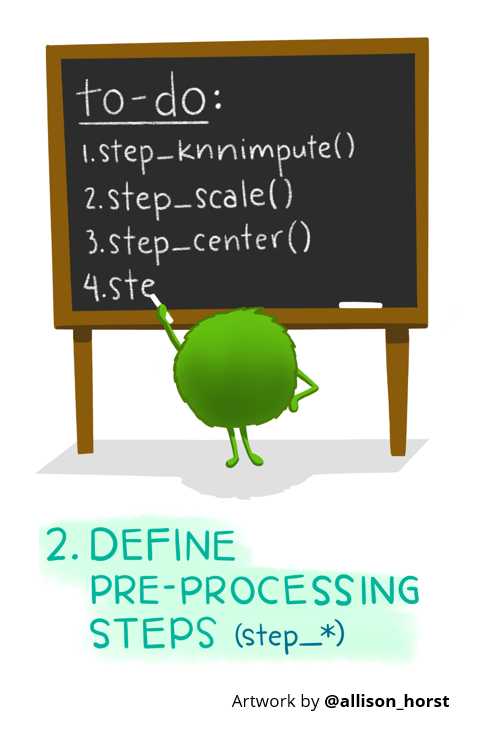
Training preprocessing steps
recipe objects are trained on a data source, typically the training dataset
- Data transformations are estimated
- Mean and standard deviation of numeric columns for centering and scaling
- Formulas for creating new columns are stored for applying to new data
Recipes are trained with the prep() function
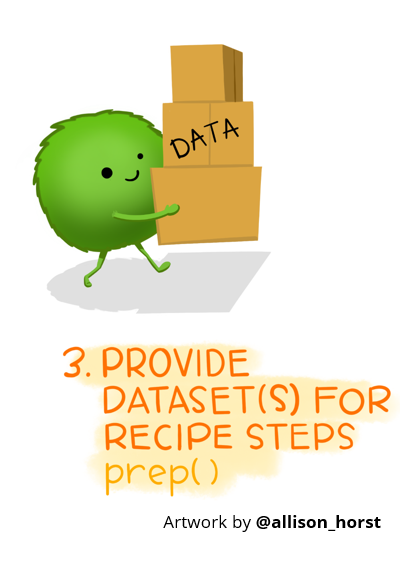
Applying recipes to new data
Apply all trained data preprocessing transformations
- To the training and test datasets for modeling
- To new sources of data for future predictions
- Machine learning algorithms require the same data format as was used during training to predict new values
Recipes are applied with the bake() function
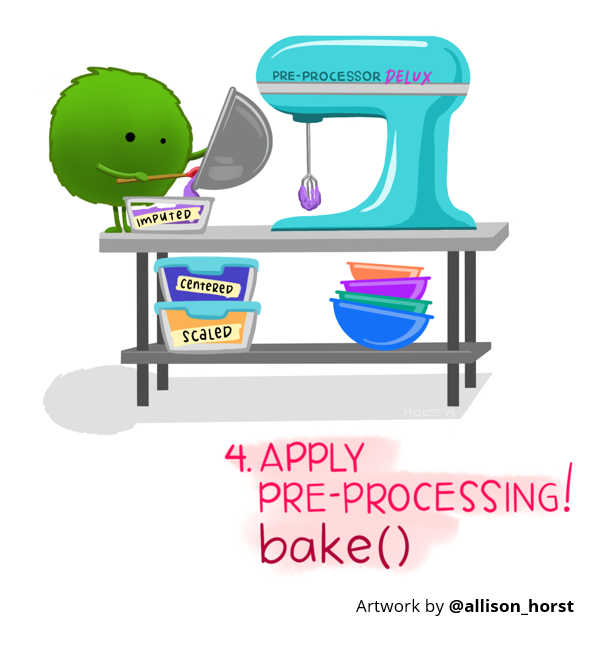
Simple feature engineering pipeline
Log transform total_time in lead scoring data
- Common transformation for large data values
- Compresses the range of data values and reduces variability
leads_training
# A tibble: 996 x 7
purchased total_visits total_time pages_per_visit total_clicks lead_source us_location
<fct> <dbl> <dbl> <dbl> <dbl> <fct> <fct>
1 yes 7 1148 7 59 direct_traffic west
2 no 5 228 2.5 25 email southeast
3 no 7 481 2.33 21 organic_search west
4 no 4 177 4 37 direct_traffic west
5 no 2 1273 2 26 email midwest
# ... with 991 more rows
Building a recipe object
The recipe() function
- Model formula
- Assigns variable roles
dataargument- Determines variable data types
Pass recipe object to step_log() to add logarithm transformation step
- Select variable for transformation,
total_time, and specify logarithm base
leads_log_rec <- recipe(purchased ~ ., data = leads_training) %>%step_log(total_time, base = 10)
leads_log_rec
Data Recipe
Inputs:
role #variables
outcome 1
predictor 6
Operations:
Log transformation on total_time
Explore variable roles and types
Passing a recipe object to the summary() function
- Creates a tibble with variable information
typecolumn- Captures data type of variable
- 'nominal' represents categorical variables
rolecolumn- Captures variable roles for modeling
- Assigned based on input model formula
leads_log_rec %>%
summary()
# A tibble: 7 x 4
variable type role source
<chr> <chr> <chr> <chr>
1 total_visits numeric predictor original
2 total_time numeric predictor original
3 pages_per_visit numeric predictor original
4 total_clicks numeric predictor original
5 lead_source nominal predictor original
6 us_location nominal predictor original
7 purchased nominal outcome original
Training a recipe object
The prep() function
- Takes a
recipeobject as the first argument trainingargument- Specifies the data on which to train data preprocessing steps
Printing a trained recipe object
- Trained steps are indicated by
[trained]
leads_log_rec_prep <- leads_log_rec %>%
prep(training = leads_training)
leads_log_rec_prep
Data Recipe
Inputs:
role #variables
outcome 1
predictor 6
Training data contained 996 data points and
no missing data.
Operations:
Log transformation on total_time [trained]
Transforming the training data
The bake() function
- First argument is a trained
recipeobject new_dataargument- Data on which to apply trained
recipe
- Data on which to apply trained
- Training data
leads_trainingwas used to train therecipe- By default, transformed data is retained by
prep()function - Pass
NULLtonew_datato extract
- Returns a tibble with transformed data
leads_log_rec_prep %>%
bake(new_data = NULL)
# A tibble: 996 x 7
total_visits total_time ... us_location purchased
<dbl> <dbl> ... <fct> <fct>
1 7 3.06 ... west yes
2 5 2.36 ... southeast no
3 7 2.68 ... west no
4 4 2.25 ... west no
5 2 3.10 ... midwest no
# ... with 991 more rows
Transforming new data
Transforming datasets not used during recipe training
- Pass dataset to
new_dataargument - Trained
recipewill apply all steps to new data sources
leads_log_rec_prep %>%
bake(new_data = leads_test)
# A tibble: 332 x 7
total_visits total_time ... us_location purchased
<dbl> <dbl> ... <fct> <fct>
1 8 2 ... west no
2 4 3.13 ... northeast yes
3 3 2.25 ... west no
4 2 1.20 ... midwest no
5 9 3.01 ... west yes
# ... with 327 more rows
Let's get baking!
Modeling with tidymodels in R

